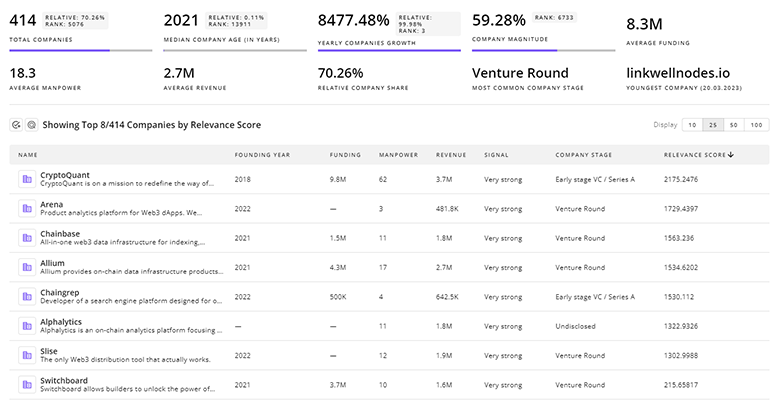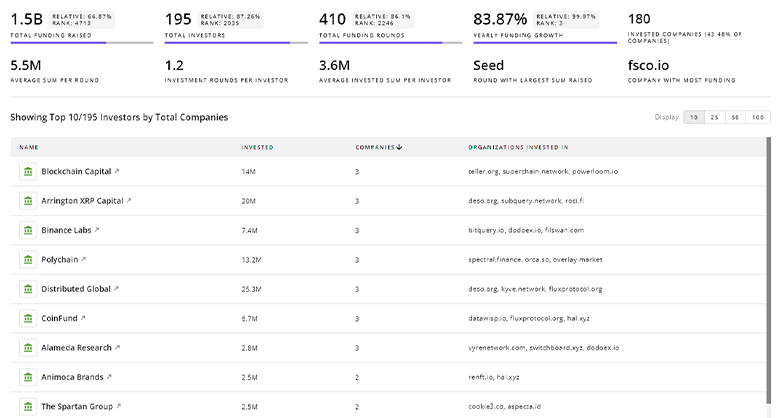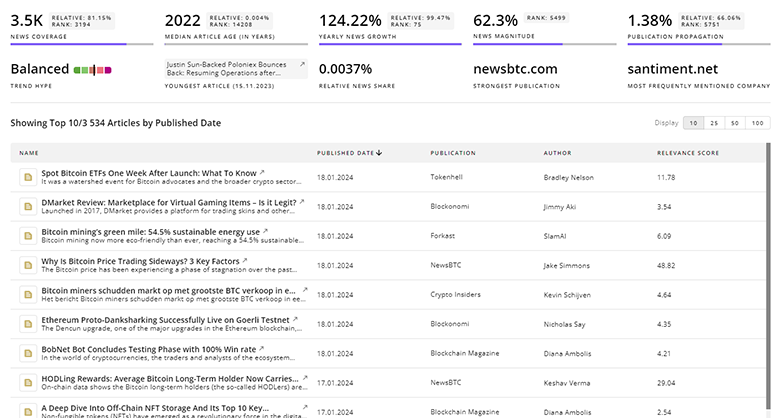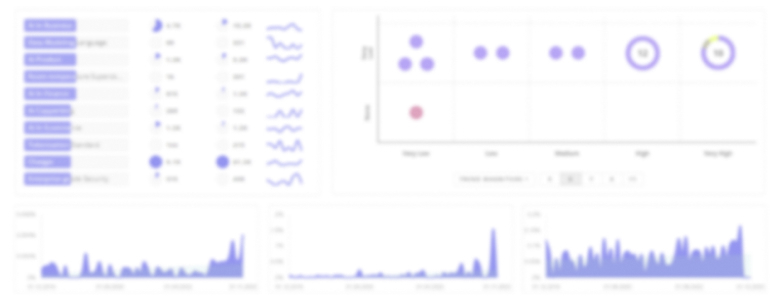
Vertical Farming Report
: Analysis on the Market, Trends, and TechnologiesThe vertical farming industry represents an innovative and sustainable approach to agriculture, addressing critical issues such as food security, environmental impact, and resource optimization. This sector, currently in a developmental stage, is marked by a surge in technological integration, sustainable practices, and efficient resource management. With a compound annual growth rate of 24.6% from 2020 to 2025, vertical farming is poised to revolutionize traditional farming methods, offering a scalable solution to meet the demands of a growing global population.
486 days ago, we last updated this report. Notice something that’s not right? Let’s fix it together.
Topic Dominance Index of Vertical Farming
The Topic Dominance Index offers a holistic analysis of Vertical Farming, merging data from 3 diverse sources: relevant published articles, newly founded companies, and global search metrics.
Key Activities and Applications
- Development of controlled environment agriculture (CEA) systems for year-round crop production.
- Implementation of hydroponic, aeroponic, and aquaponic systems for soilless cultivation.
- Adoption of precision agriculture techniques for enhanced crop monitoring and management.
- Design and construction of modular vertical farms for urban and peri-urban settings.
- Provision of educational programs and consultancy services to foster industry knowledge and skills.
Emergent Trends and Core Insights
- Significant growth in investment, with funding reaching approximately $4.4 billion, signaling strong market confidence.
- A consistent increase in workforce size, with an annual employee growth rate averaging 4.59%.
- Expansion of vertical farming applications beyond leafy greens to include fruits, herbs, and medicinal plants.
- Integration of artificial intelligence, machine learning, and IoT for advanced farm management and automation.
- Emphasis on sustainability through reduced water usage, elimination of pesticides, and localized food production.
Technologies and Methodologies
- Deployment of energy-efficient LED lighting systems tailored for plant growth.
- Utilization of advanced climate control systems for optimal growing conditions.
- Application of data analytics for real-time monitoring and decision-making.
- Exploration of novel materials and structures for vertical farming infrastructure.
- Collaboration with research institutions for the continuous improvement of crop yields and system efficiencies.
Vertical Farming Funding
A total of 253 Vertical Farming companies have received funding.
Overall, Vertical Farming companies have raised $4.4B.
Companies within the Vertical Farming domain have secured capital from 776 funding rounds.
The chart shows the funding trendline of Vertical Farming companies over the last 5 years
Vertical Farming Companies
Stay connected with industry movements through TrendFeedr’s Companies tool, which covers 1.1K Vertical Farming companies.

1.1K Vertical Farming Companies
Discover Vertical Farming Companies, their Funding, Manpower, Revenues, Stages, and much more
Vertical Farming Investors
Discover investment patterns and trends with TrendFeedr’s Investors tool based on insights into 226 Vertical Farming investors. This tool is essential for understanding the financial ecosystem of Vertical Farming and developing successful investment strategies.

226 Vertical Farming Investors
Discover Vertical Farming Investors, Funding Rounds, Invested Amounts, and Funding Growth
Vertical Farming News
TrendFeedr’s News feature grants you access to 5.6K Vertical Farming articles. This tool supports professionals in tracking both past trends and current momentum in the industry.

5.6K Vertical Farming News Articles
Discover Latest Vertical Farming Articles, News Magnitude, Publication Propagation, Yearly Growth, and Strongest Publications
Executive Summary
Vertical farming is rapidly emerging as a key player in the future of sustainable agriculture. The sector's commitment to innovation, coupled with substantial financial backing and workforce expansion, underscores its potential for long-term viability. By harnessing cutting-edge technologies and methodologies, vertical farming is not only enhancing food production but also contributing to environmental conservation. The industry's trajectory suggests a promising future where vertical farms become an integral part of the global agricultural landscape, delivering fresh, nutritious, and sustainably-grown produce to communities worldwide.
We're looking to collaborate with knowledgeable insiders to enhance our analysis of trends and tech. Join us!












